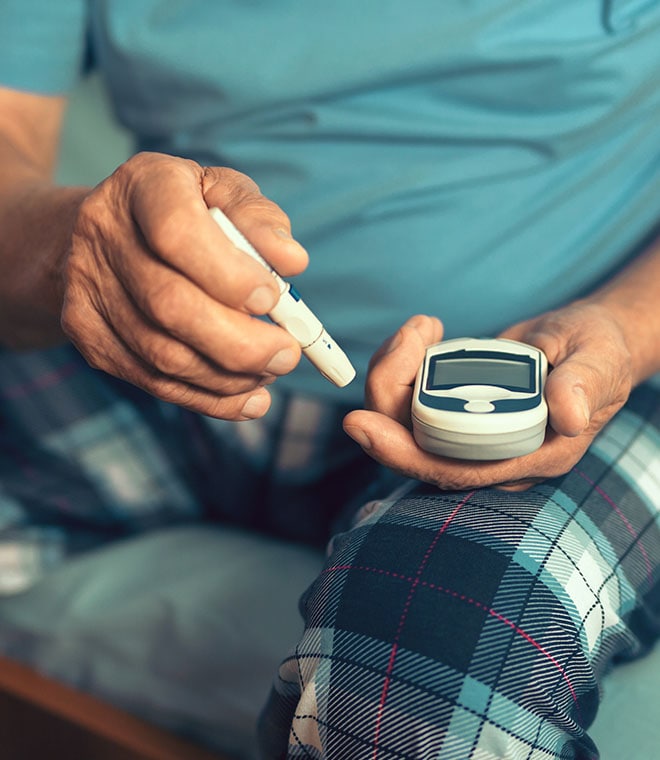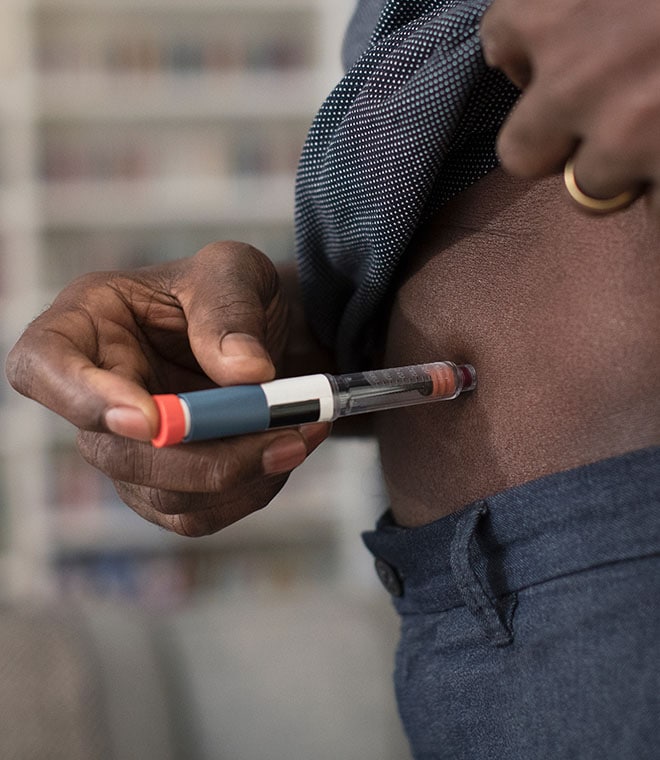Health
Continuous glucose monitoring (CGM) systems for diabetes
By Kanesha Kirkwood, PharmD, BCPS Mar 31, 2022 • 3 min
If you have type 1 or type 2 diabetes, keeping your blood sugar in check is the best thing you can do to stay healthy. Continuous glucose monitoring (CGM) systems, can help make checking your blood sugar a little easier, with fewer fingerstick tests. Pharmacist Kanesha Kirkwood answers your most-searched questions about how a CGM works.
Transcript
Kanesha Kirkwood, pharmacist: If you have type 1 or type 2 diabetes, keeping your blood sugar in check is the best thing you can do to stay healthy. While monitoring blood sugar levels is important, we know it isn’t always that easy.
Luckily, new technology has been developed to help make checking your blood sugar a little easier. Continuous glucose monitoring systems, or CGM, can help you manage your glucose levels throughout the day with fewer fingerstick tests.
Let's answer some of your questions about how CGM works ...
What is CGM?
A CGM device automatically tracks your glucose levels, in real time, 24 hours a day. You can see your glucose levels at any moment, and you can review how it changes over a few hours or days to see a trend. If your blood sugar reaches a dangerously high or low level, you’ll get an alert.
Real-time readings can help you make healthy choices throughout the day about your diet, your exercise and medications.
How does a CGM work?
A CGM works through a tiny sensor inserted just beneath the skin, usually on your upper arm or abdomen. The sensor measures interstitial glucose levels—that’s the blood sugar found in the fluid between your cells. Every few minutes, it sends the data to a monitor that displays your levels. Some CGMs can send information right to your smartphone or wearable device, like a smartwatch.
Does it hurt to insert the sensor?
Modern CGM sensors are small and relatively painless to insert. In fact, most CGM users say they only feel a slight pinch when inserting it. Once it’s applied, most people find it comfortable and easy to wear.
Are CGMs accurate?
All technology has a margin of error, but medical advancements over the years have made CGMs more accurate.
Since most CGMs report glucose levels every few minutes, you’ll have a clear picture of your numbers and where they’re headed around the clock (without having to prick yourself every time!)
Will I still need to do fingerstick tests with CGM?
You’ll need fewer fingerstick tests with CGM than with a standard blood glucose meter. There are still certain times where you’ll want to do a fingerstick test. For example, you’ll need a fingerstick test twice a day just to make sure your CGM readings are accurate.
How much does a CGM cost? Will my insurance cover it?
There’s not one simple answer. The retail price of a CGM can be hundreds of dollars, however, what you pay will vary by your insurance or Medicare coverage. The easiest way to find out is by contacting your insurance to see if you’re covered.
How can I get a CGM?
CGMs are available at Walgreens with a prescription. You can find these products and other diabetes services in the Find Care section on the Walgreens App and website, or simply go to Walgreens.com/CGM to learn more.



